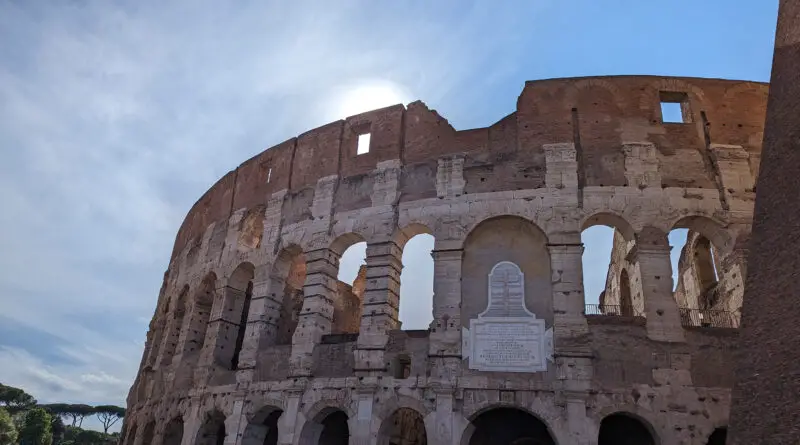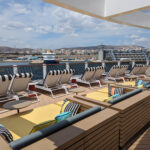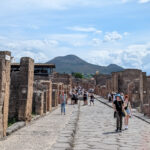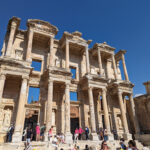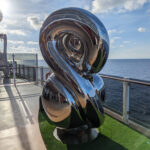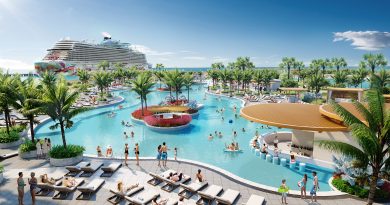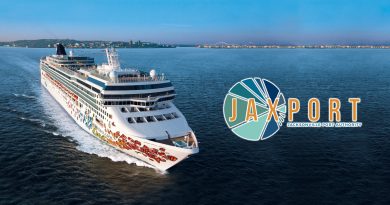Norwegian Viva Mediterranean Cruise Blog – Day 11 – Rome
Last Updated on August 20, 2024
Our 10-day cruise aboard the Norwegian Viva had come to an end, but it didn’t mean the vacation was over yet. On our last day, we departed the beautiful ship and headed to Rome, where we’d spend a day exploring before heading back to the US.
Norwegian Viva Mediterranean Cruise Day 11 Overview
- Last Morning on Norwegian Viva
- Guest Services for a Wrong Charge
- Debarking the Viva
- Getting From Civitavecchia To Rome
- Hotel Artorius
- Roman Forum
- Trevi Fountain
- Piazza Navona
- Pantheon
- Visiting the Colosseum
- Dinner at I Monticiani
- Getting from Rome to the Airport
Last Morning on Norwegian Viva
The last day onboard a cruise ship is always the worst. You have to wake up early, deal with crowds, white in long lines, and grab your stuff to leave the ship. While the processes have improved over the years, it’s still a low-point of any vacation.
When leaving the Viva, you have two options: self-assist or assisted. We had already arranged a shuttle to pick us up at Civitavecchia Port and take us to Rome at 8:30 AM. Because of that, we didn’t need to get off the ship in any rush, so we were going to do a later departure, which meant we’d have to let Norwegian take our bags off the ship. To do that, we had to put them outside our door by 10 PM the night before.
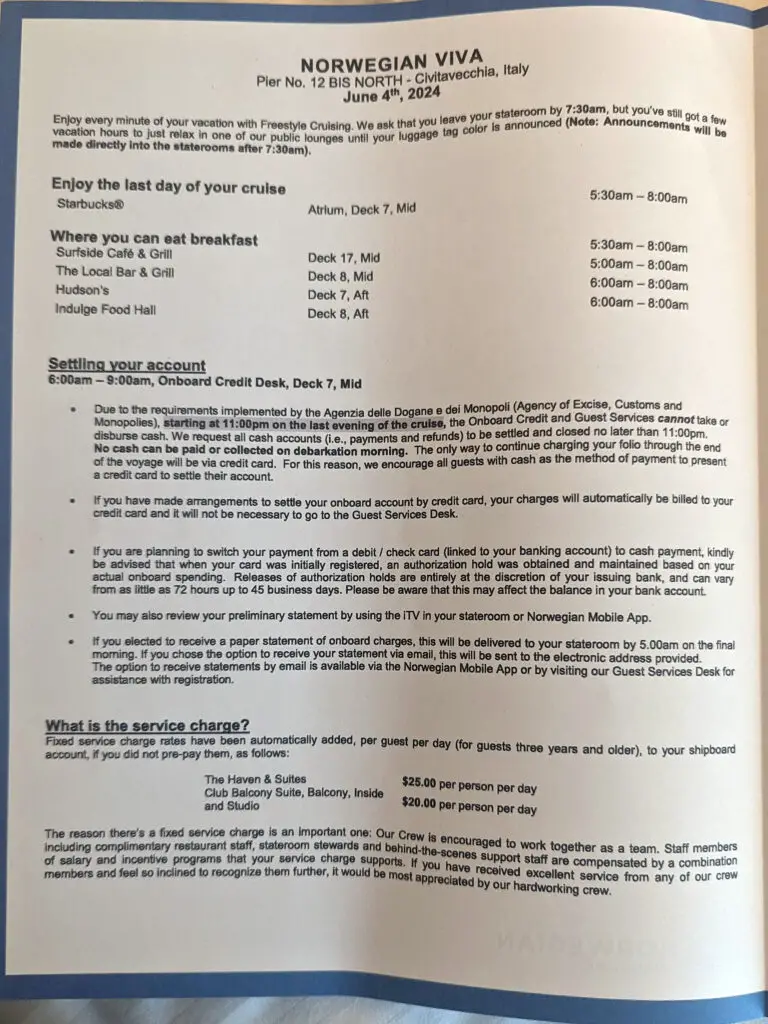
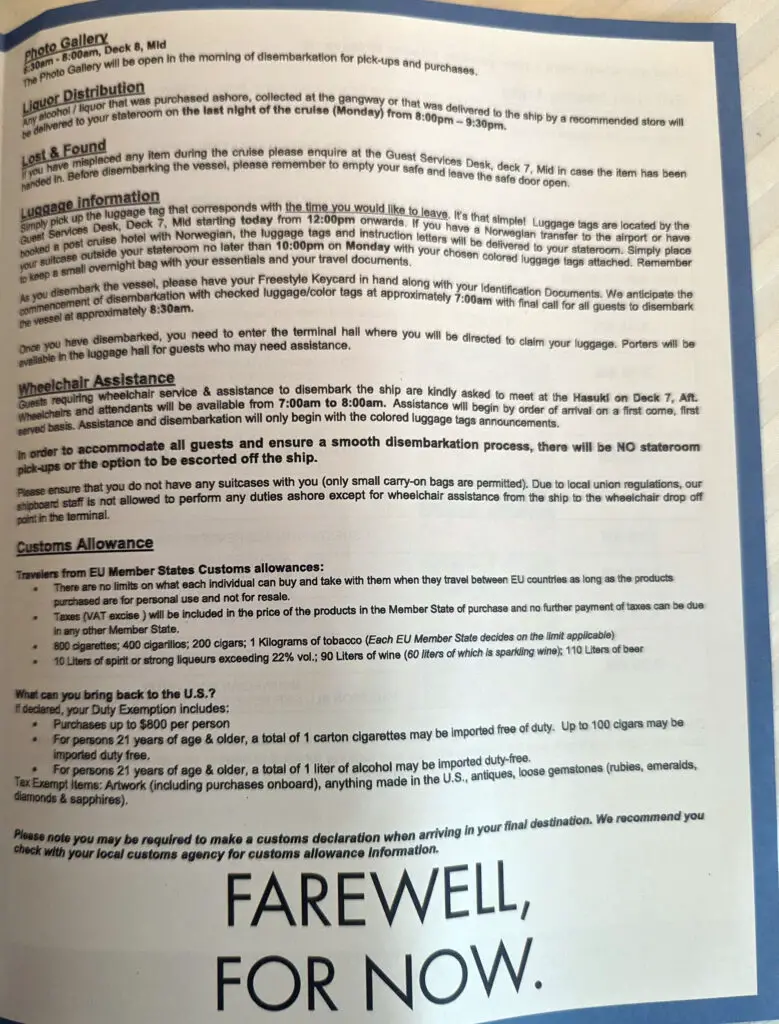
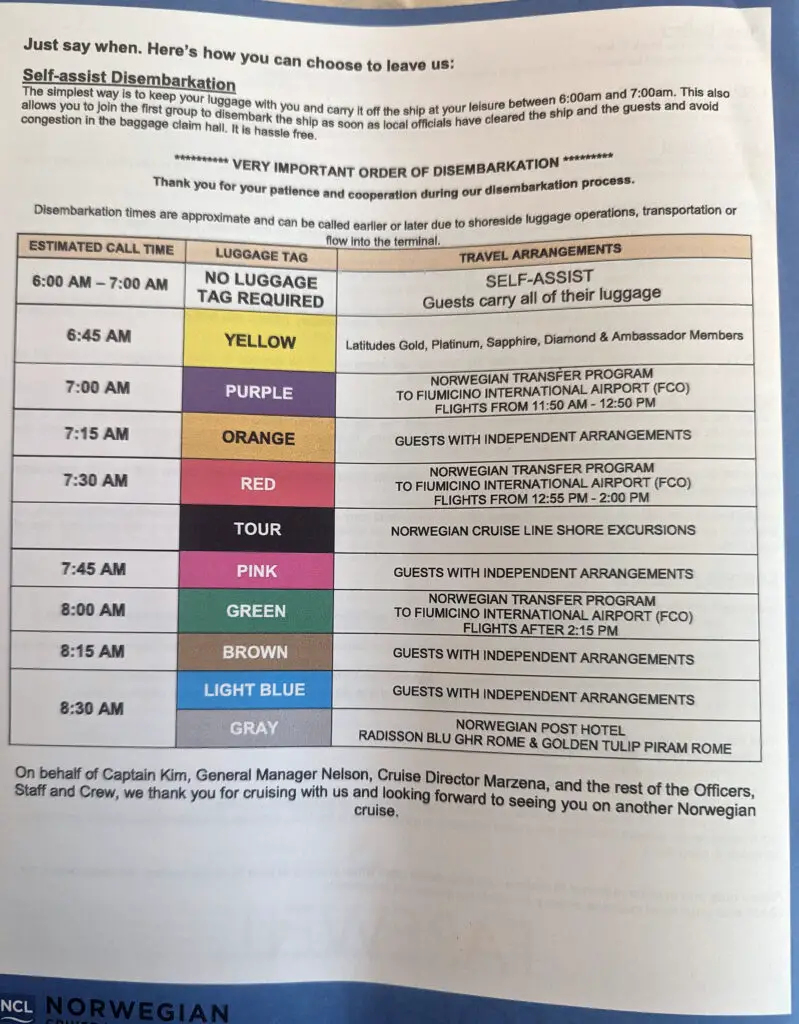
Our shuttle to take us from the port, Civitavecchia, to Rome was at 9 AM, so we opted to leave the ship at 8:15 AM. They asked that we leave our cabins by 7:30 AM, so we headed to breakfast. Breakfast this morning was served in Surfside Cafe, The Local, Hudsons, and Indulge until 8 AM. We picked Indulge Food Hall, which was usual for this cruise, was pretty empty making it a much better option than the buffet.

Guest Services for a Wrong Charge
Before we left the ship, I looked at my onboard account using the app and saw I was charged $30 for something in Hudsons main dining room. I knew I never ordered anything for an extra charge, so I went to Guest Services. Being the last day, I thought there would be a long line, but there was no one there.
Tip: Check your “Onboard account” in the NCL app every day. If you see something incorrect, address the issue as soon as possible with Guest Services.
I explained the issue to the gentleman working the desk, who was very dismissive. Before he even pulled up the details, he asked, “Well, did you order an extra entree or wine? That’s probably what is was” Then he reluctantly looked into it and said it was a glass of wine over the limit of the Unlimited Open Bar package. At no point did I ever order or authorize any drink that had a charge. I said that to him, so he proceeded to “call the waiter” and ask if it was right. This charge was from four days prior from a waiter I had once the whole cruise. And within seconds, the waiter remembered that specific interaction and said, “I delivered them that wine,” and that was it. It felt like a whole charade to pressure me to say the charge was correct.
The guest services manager then printed out the receipt for that meal; it had nine different drinks on it. Looking at it, some of my friends’ drinks were on there. When waiters take your order on Norwegian, they only grab as few cards as they need to make it easier for them (they’re allowed to ring up several drinks at once to one card). So it was routine that the waiter would just grab the two cards closest to them and charge all the drinks to that card. I explained that to him, and he said, “Then why did you let your friend order a premium wine? You should take it up with them.” in a snarky tone.
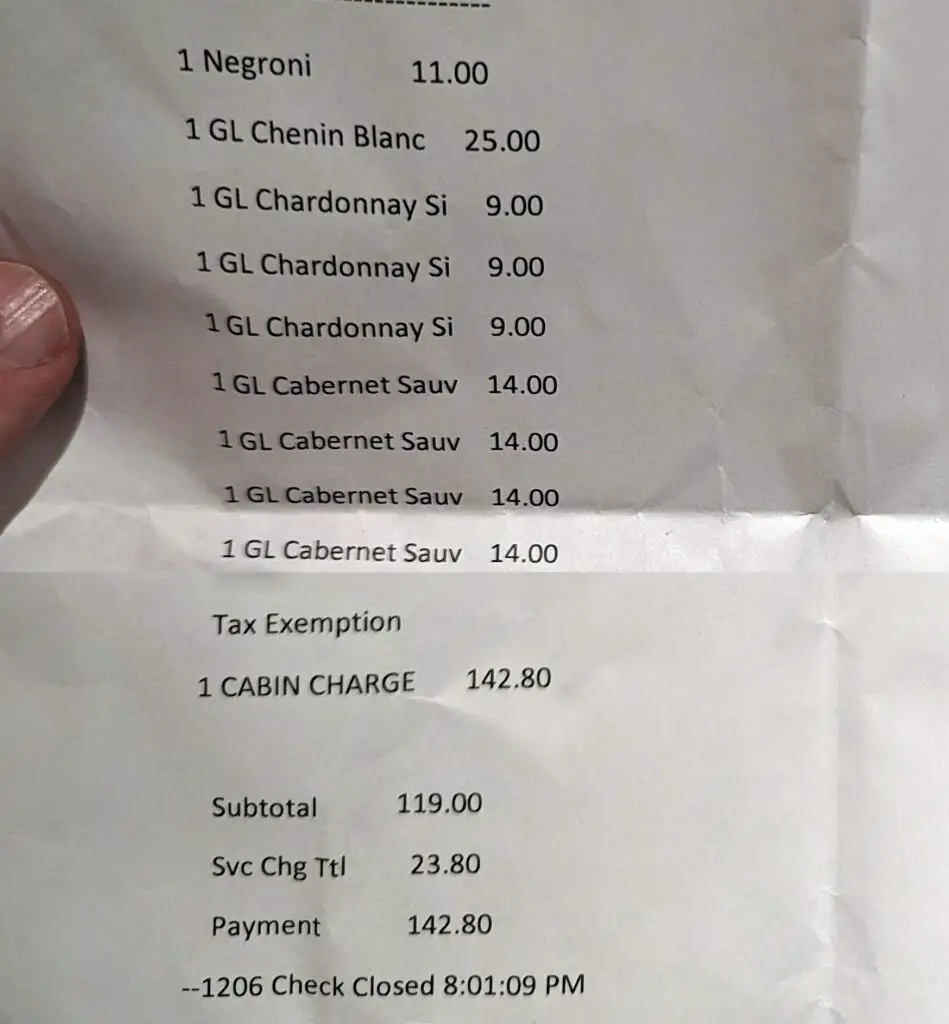
It was the last day of the cruise, and at that point, I couldn’t be sure one of my friends didn’t order that wine. It wasn’t worth me battling with the representative over $30. When looking at the receipt later, four of the wines ordered were white, and I knew no one at my table drank white wine. In addition, the glass they were charging me for was $25 plus 20% gratuity, but if it’s not covered under Free at Sea, you should get a $14 credit, so it should have cost $13.20. Also, why didn’t he have my signature for the drink? It’s not the end of the world, but the whole interaction left a bad taste in my mouth.
Debarking the Viva
Around 8:15, they called brown luggage tags to leave the ship. We took the stairs down to Deck 6, the first floor of the Atrium, and found the line to leave. The line started in the Atrium and went through the theater until you made it back into the lobby to exit through the main doors. The line went very quickly, it was only a couple of minutes before we were walking off the Viva for the last time.
Note: Don’t leave your room key in your room on the last day, like you might at some hotels. You need your cruise card/room key to exit the ship. If you don’t have it, they’ll use your passport to look up your information, which will slow down the process.
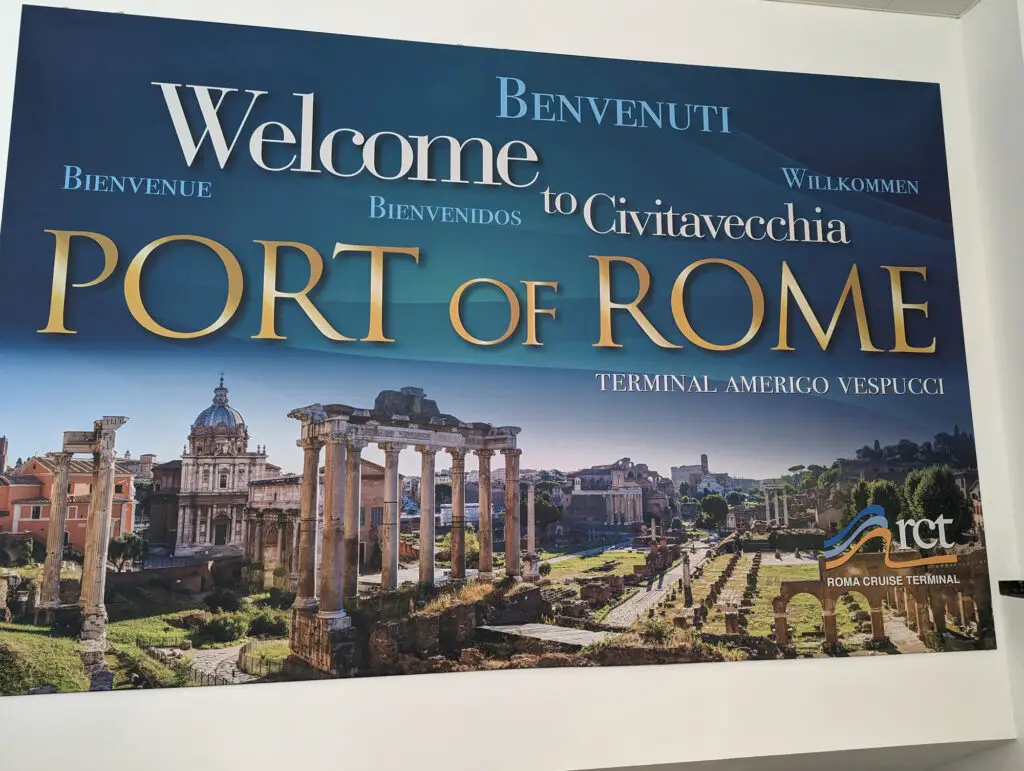
Once we left the ship, we went to the massive warehouse where our bags were. All the brown-tagged bags were together, so we looked through them to find the right ones. It definitely helps if you have a sticker, ribbon, or other identifier to make your bags easy to find.
After we grabbed our bags, we headed out of the building. We stood in line for 10 minutes to get out. We thought maybe it was customs or something else slowing us down, but it was only slow because the warehouse us out into a parking lot with a wall of people. People weren’t moving, forcing the line to go slowly.
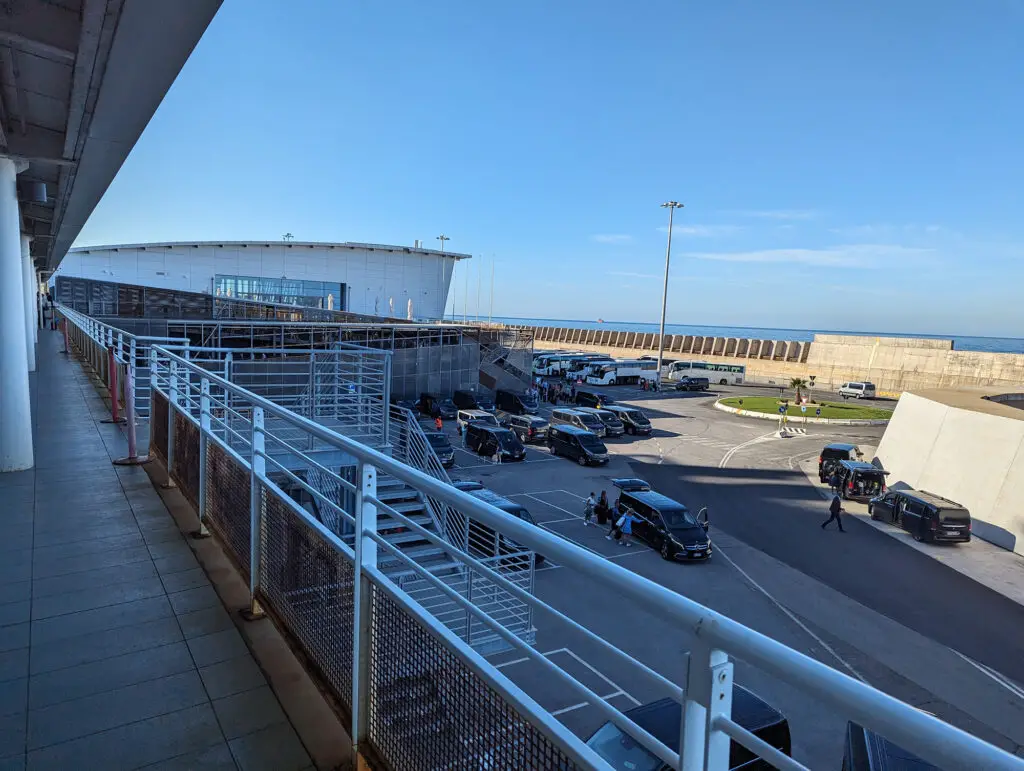
We proceeded to the end of the building to wait for our transportation. We kept checking to see if our shuttle tried to call us, but Civitavecchia doesn’t have the best cell phone service. All our phones showed 4 bars of reception but calls, texts, and data weren’t going through. That usually indicates an overload of service and that the local towers can’t handle the 3,000+ people connecting simultaneously. After about 15 minutes, we saw a sign with our name and headed to the shuttle.
Getting From Civitavecchia To Rome
We got into our shuttle and started on our way. While this cruise terminal is usually referred to as Rome, it’s actually in Civitavecchia, quite a distance from the city center. On this day, it took us an hour and 35 minutes to arrive at our hotel near the Colosseum.
Hotel Artorius
We’d be staying in Rome for just one day, so we wanted a decent, inexpensive hotel close to the tourist attractions. We settled on Hotel Artorius because it met those requirements and had the option to book a shuttle for us for $32 per person, which was a good deal.

The hotel itself was small and no-frills. The hotel only had a handful of rooms lining a small courtyard. Since it was 10:30 AM, our rooms weren’t ready yet, so they locked up our bags so we could explore the city.
Once we eventually got into our rooms, they were clean and efficient. The beds were a bit hard, but the air conditioning worked well, and the rooms were a good size. It wasn’t the Ritz Carlton, but it suited our needs.

Roman Forum
After we dropped off our bags, we headed to the Roman Forum. Because Republic Day was just a few days prior, many streets and sidewalks were full of scaffolding and seating. It made the available walkways really crowded, making me feel like I was being herded like cattle.
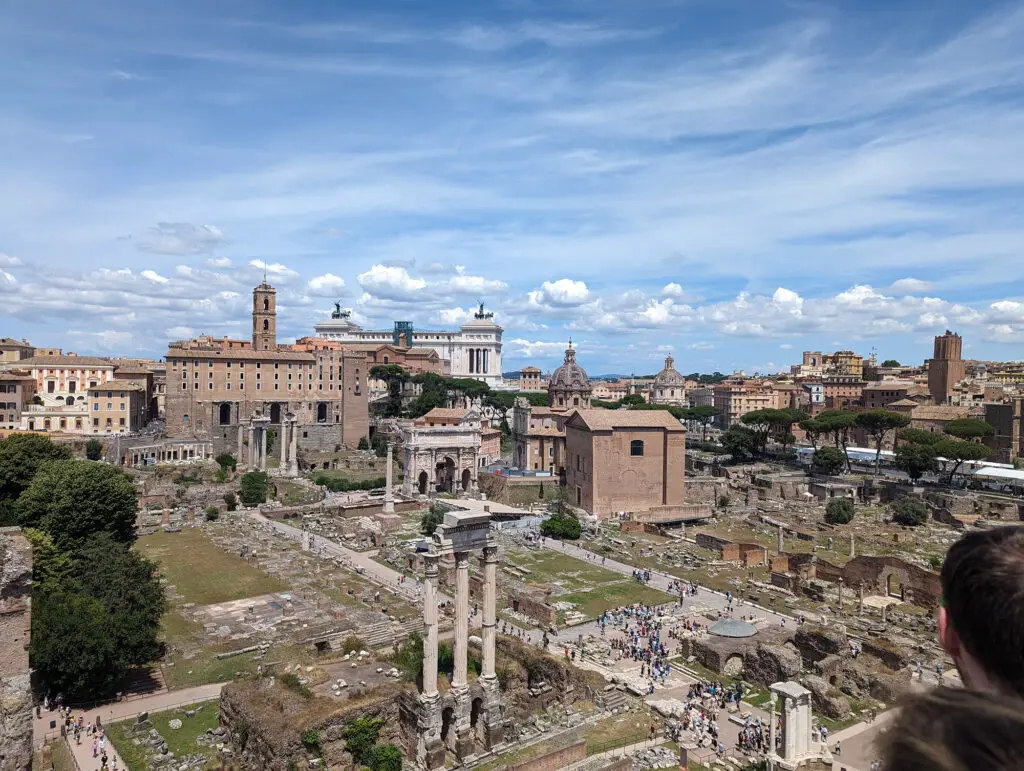
Once we got to the Roman Forum, it was better. The outdoor museum was large, and the crowds dissipated as they went down different paths. We scanned our tickets (which were included with our Colosseum tickets) and headed in. The forum is really large and expansive in scale. What’s striking about the site is that you’ll see these ancient buildings standing and right behind them an office or apartment building.

The Roman Forum was the ancient marketplace in Rome and also a place for important meetings and gatherings. The site had statues, shrines, and buildings that most Romans would visit while in the city. Today, it’s in varying states; some are just rubble on the ground, and others are nearly intact. While there was some signage at the Roman Forum, it was hard to understand what was what; a tour or audio guide might have helped here.
At the East side of the Forum, you could get some good pictures of the Colosseum in the distance.
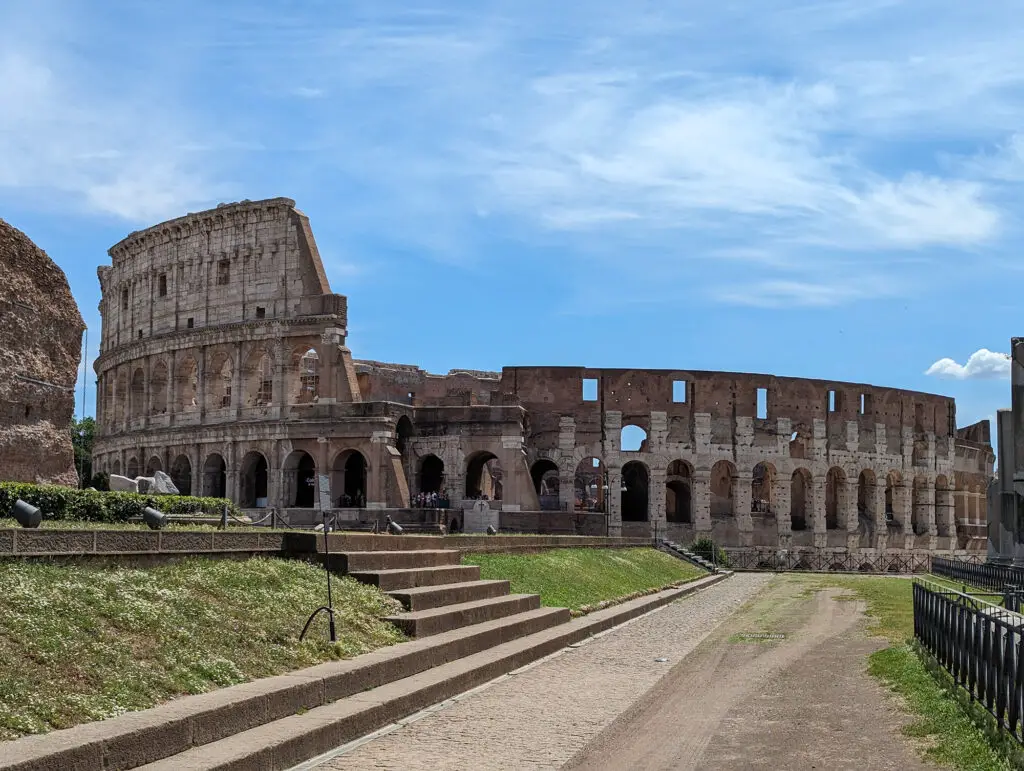
Trevi Fountain
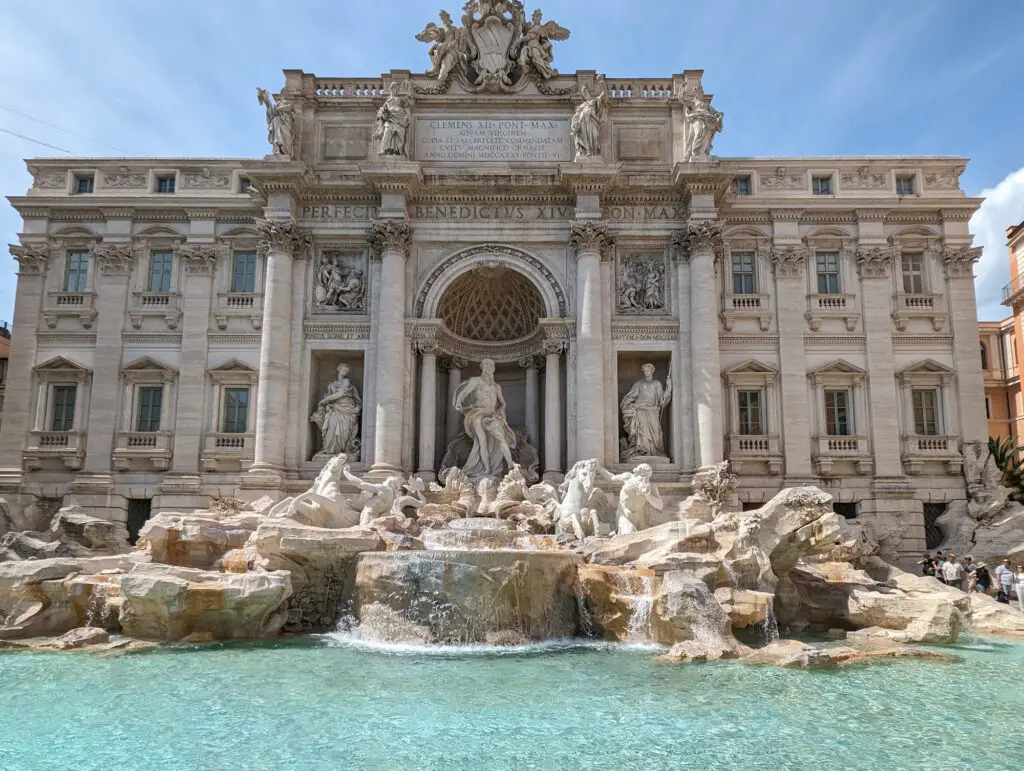
The next stop on the tourist highlights of Rome was Trevi Fountain. This 18th-century fountain is been a “must-do” for tourists visiting Rome. It’s one of the most well-known fountains in the world, and its scale is impressive.
It’s said that if you toss a coin into the fountain, you’ll be sure to return to Rome. You are supposed to throw the coin while facing away from the fountain, using your right hand over your left shoulder. Each year, over a million Euros are recovered from the fountain and used to feed the poor in the city.
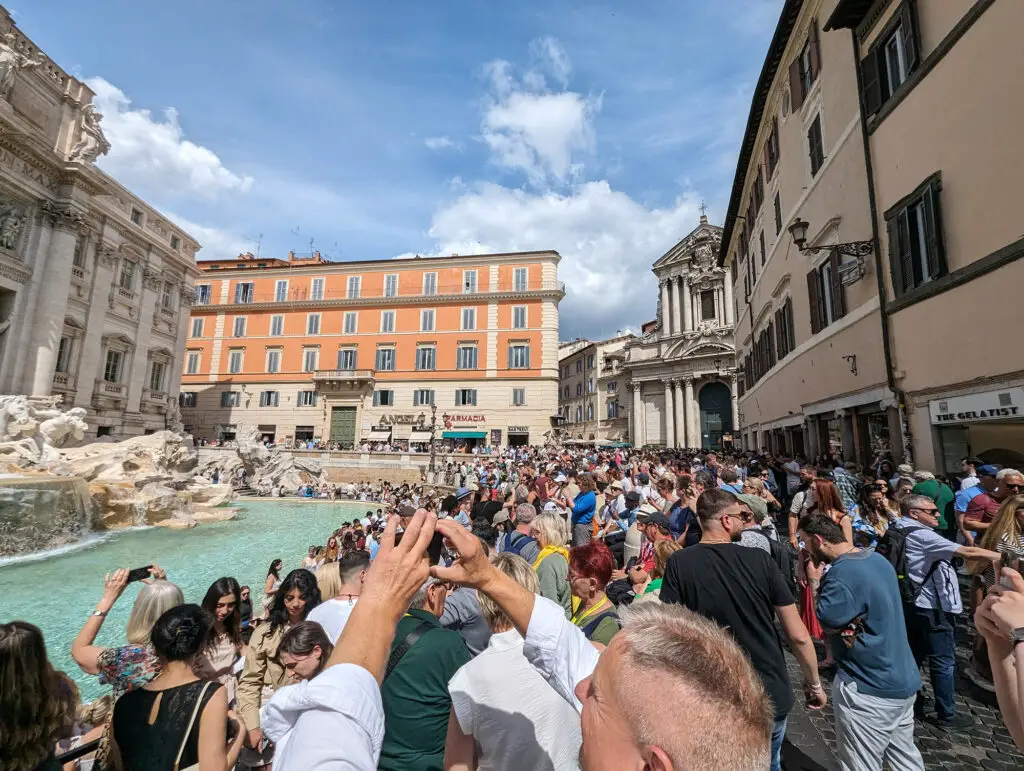
I visited the fountain when I was in Rome in 2008 (I tossed a coin in, so it must have worked). At the time, there was a small crowd, but it wasn’t bad. Now, because of Instagram and social media, the fountain is absolutely mobbed. It was difficult to get anywhere near the fountain; even when we could, it was hard to take in how beautiful and magnificent it is.
Tip: If you can, go to Trevi Fountain early in the morning or late at night for smaller crowds.
Piazza Navona
After the fountain, we walked over to Piazza Navona. This large public square is lined with shops and cafes for a relaxing stroll and meal. Piazza Navona also has three fountains in the middle. Unfortunately, for our visit, all three were dry and behind fences for construction, ruining the plaza’s ambiance.
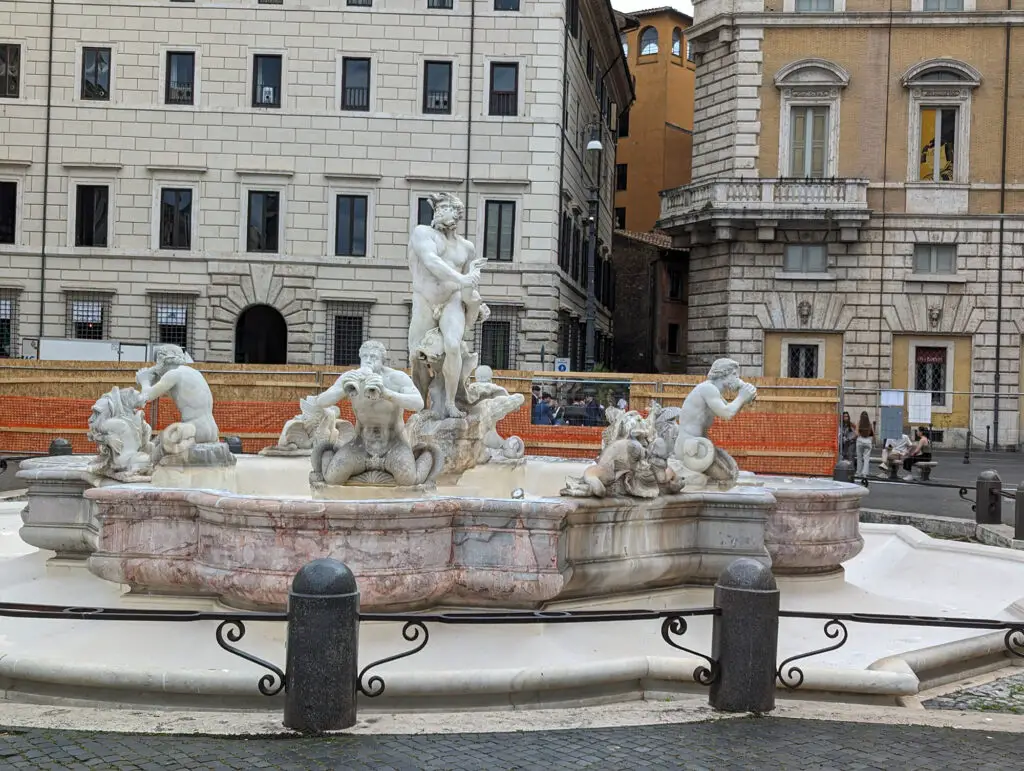
Piazza Navona is also known for tartufo, a delicious chocolate dessert. It’s a ball of gelato (usually chocolate) wrapped around a core of frozen fruit, coated in a sheet of chocolate, and served on a plate to eat with a knife and fork. It’s hard to eat while walking, though, so while here, we skipped all the “original” tartufo vendors and had some delicious gelato instead.
Pantheon
Our next stop was the Pantheon. This magnificent building was originally built in 27 BC and rebuilt as a Roman Temple in 120 AD. Then, in 609 AD, it switched to a Catholic Church. It’s one of the best-preserved Roman buildings because it has been used continuously over the years.
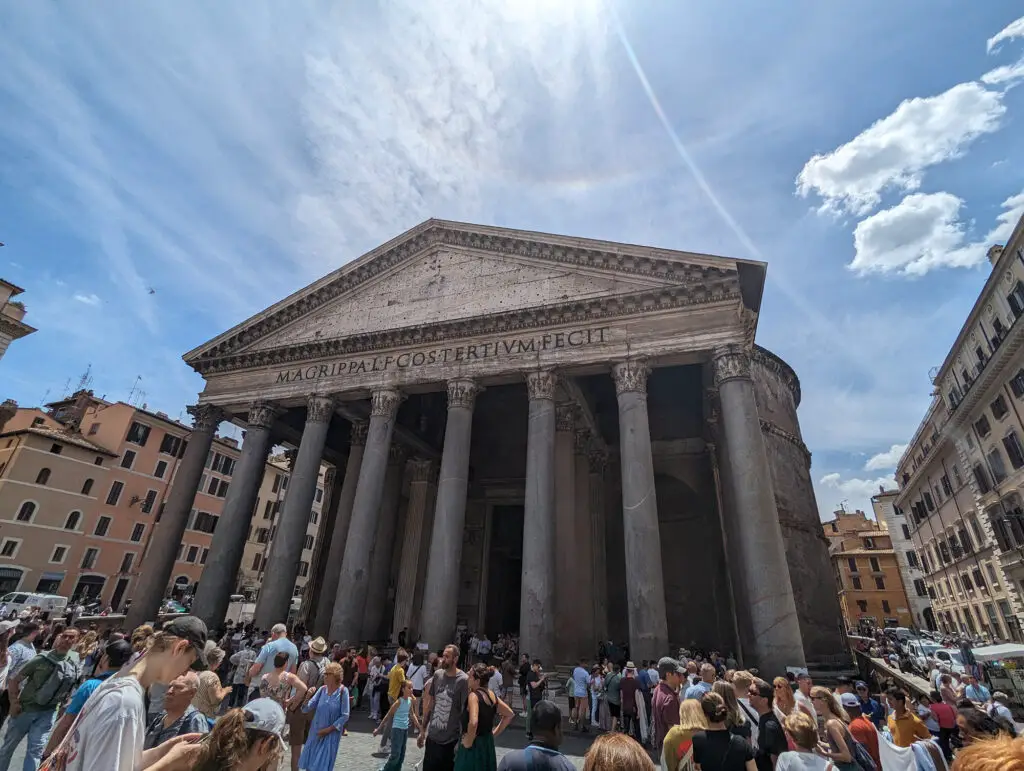
You can purchase tickets in advance through the Pantheon’s website (official website link), but they are timed tickets, meaning you have to know when you’re going to be at the site. Since our plans were more fluid, we purchased our tickets when we got there. The cost was 15 euro, and it came with a free audio guide.
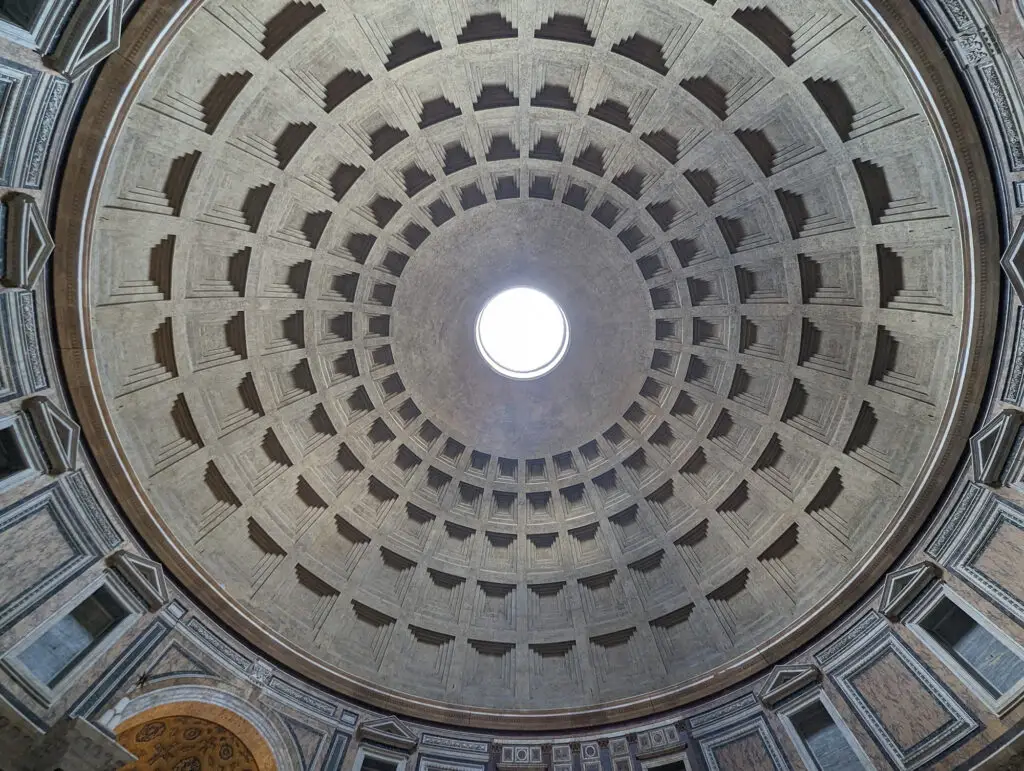
The most remarkable feature of the space is the massive dome. It’s the world’s largest unreinforced concrete dome. At the top of the dome is an opening, an oculus. The sunlight that comes through the open dome is the only light, besides some candles, that illuminates the space. Beautiful marble accents and sculptures fill the space along with standard items you would find in a Catholic church.
Visiting the Colosseum
The Colosseum, Rome’s most well-known site, was our last site to visit for the day and this trip.
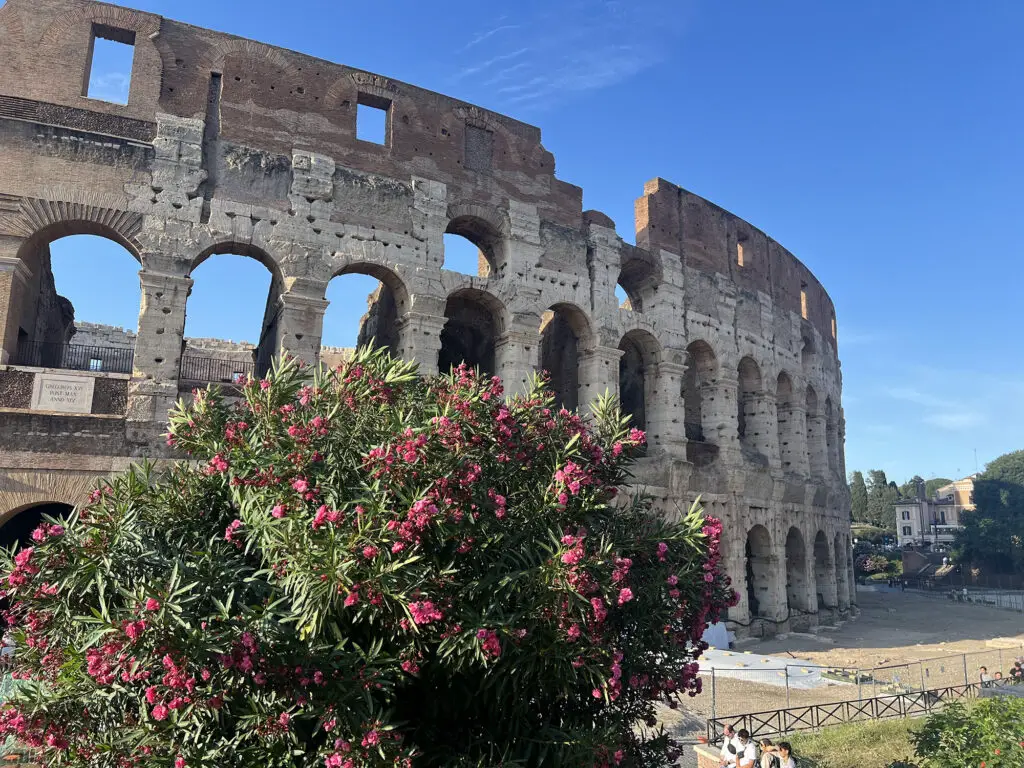
Buying Tickets to the Colosseum
Getting tickets for the Colosseum was a bit tricky. For the 2024 tourist season, they switched vendors to a new ticketing agent, so all the advice we could find online was outdated. The new site is run by the archeological society and can be accessed here.
The reason behind the switch was to stop ticket scalpers and “skip the line” companies from buying all the tickets and marking them up. Now, you had to provide your name when you bought the tickets, and they were tied to you.
The Colosseum had a few options which were hard to understand. All tickets include access to the Colosseum and the Roman Forum-Palatine Hill.
24H – Colosseum, Roman Forum, Palatine Hill – 18 Euro
These tickets would open 30 days before your visit. When you book the ticket, you pick the time you want to visit the Colosseum. Then, within 24 hours of that visit (before or after), you can use your tickets to visit the Roman Forum. You will have access to the Colosseum, getting to go in and walk around the facility, through the exhibits, and many of the promenade-level attractions. This is the ticket we got as a group.
Full Experience Ticket with Entry to the Arena – 24 Euro
These tickets open a week before your visit. The biggest difference with this ticket is that it gives you access to the Arena floor, a partially constructed platform at the bottom of the facility. After seeing the size/location of the platform, I’m glad we didn’t bother with these tickets. The platform only provided slightly better views than what we had. In addition to the arena, these tickets also give you access to all the other sites for two days rather than 24 hours.
Full Experience – Underground Levels and Arena – 24 Euro
These tickets open 30 days before your visit. The biggest difference between these and the other tickets is that it gives you access to the Underground at the Colosseum. This area is relatively new to visitors, and because of that, this ticket is in high demand. It was completely sold out within minutes of opening.
Full Experience Tick with Access to the Attic – 24 Euro
These tickets open 30 days before your visit. The ticket gives you access to the Colosseum and an area called “The Attic,” providing views from the very top of the Colosseum. The Attic is small and can only hold 12 people at a time, so these tickets sell out very quickly.
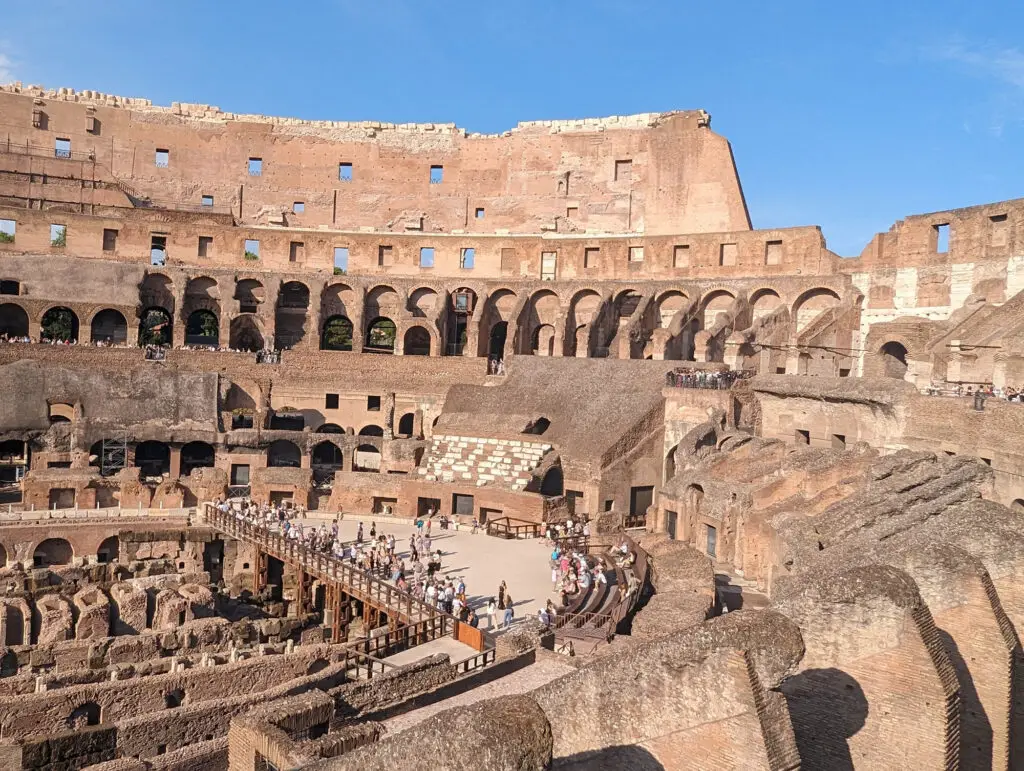
Walking Around the Colosseum
We arrived with our printed-out tickets at 5:30 PM, our booked time. We purposely chose as late in the day as possible so the heat wasn’t as bad and we could go to dinner afterward. We originally wanted to do a night tour of the Colosseum, but they weren’t running them that time of year (it seems like they started them up again in late July).
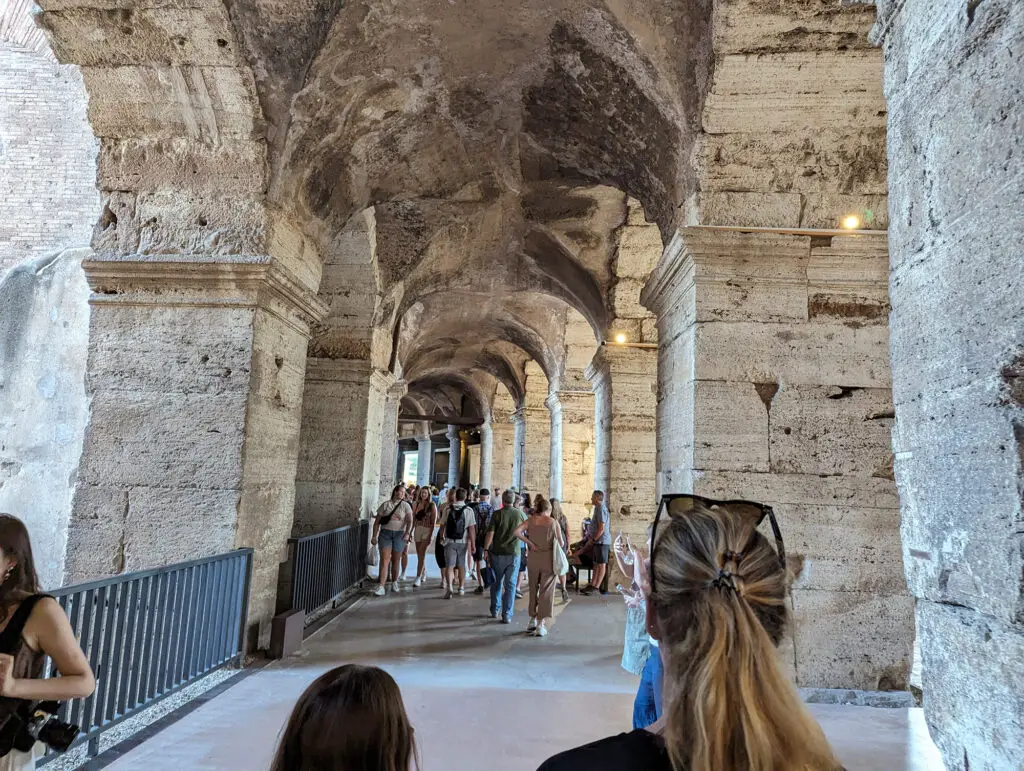
We immediately walked through the lines and security; we didn’t have to wait in any long queues or lines. When we first walked in, it was dark and cool, the old structures being optimized to allow breezes through and cool people off. We didn’t have a tour guide, so we mostly followed the flow of people to see where to go.
I had been there once before, but the site still amazed me. I just couldn’t comprehend how they were able to build such a structure nearly 2,000 years ago. It was massive, rivaling in size a modern-day arena or football stadium. The arena could hold over 50,000 people, more than Wrigley Field in Chicago and just under the New England Patriots’ Gillette Stadium.
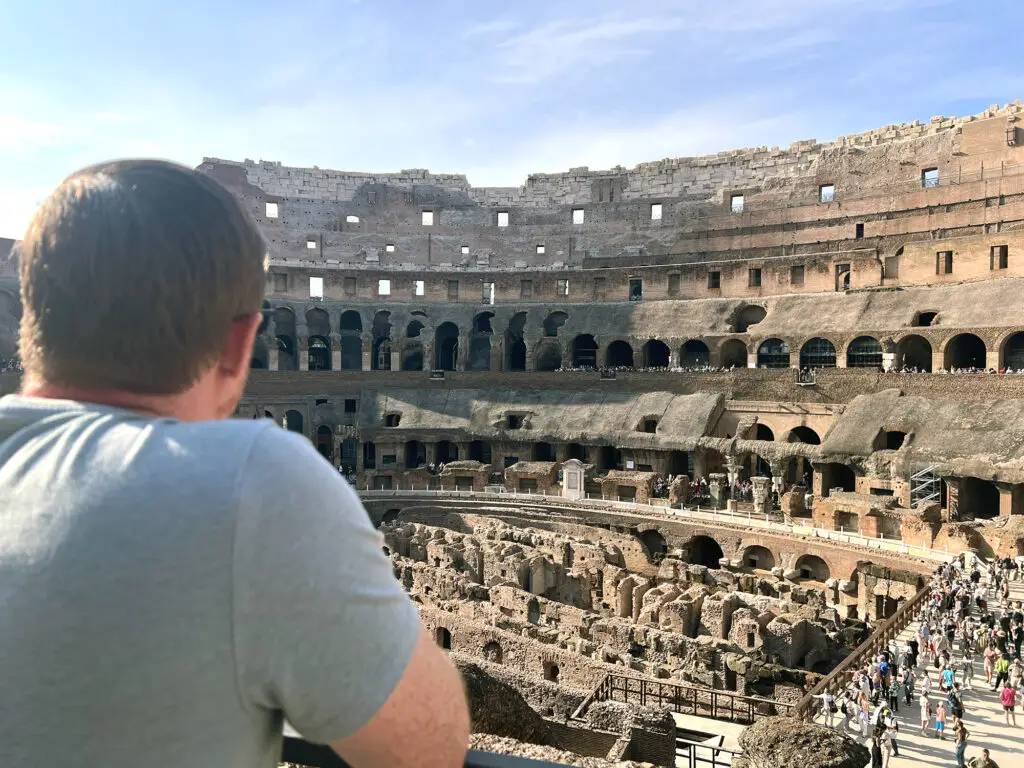
The entry area was crowded, with people pushing around to get pictures. We were surrounded by ropes and chains and couldn’t figure out where to go next. Eventually we walked back towards the main concourse and saw signs to go upstairs. Up there, we re-entered the main space of the Colosseum. This area provided a much better view than from the first-level promenade. It was much less crowded here as you could walk around the whole arena.
Tip: Don’t try to take pictures when you first enter the arena. It’s very crowded, and you can’t get a good angle. Wait until you’re upstairs, and you’ll have a much better opportunity.
As we walked around the arena, we went to see the exhibits they had set up. The signage was well done, and this was one of the few sites we visited that I didn’t think a guide would have helped me understand better.
Overall, we spent at hour the Colosseum. Some of the facts I found interesting were that they used to have retractable awnings/roof, they flooded the floor to do naval battles, and that the Colosseum sat unused for many years after the fall of the Roman empire.
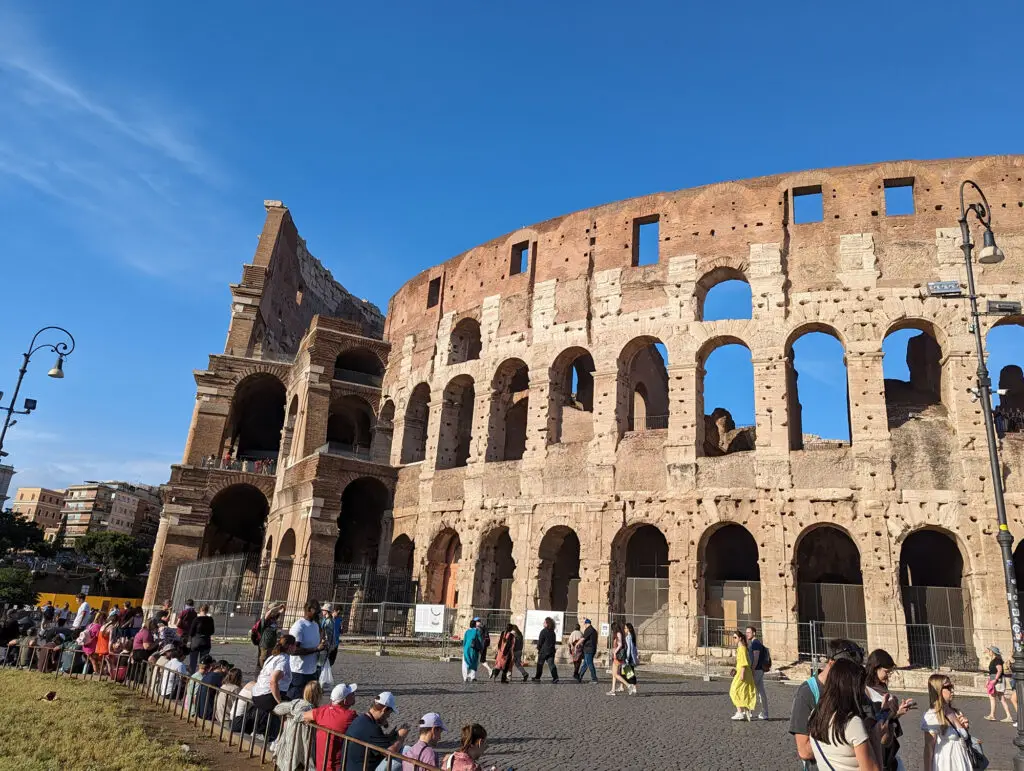
Dinner at I Monticiani, an Argentinian Italian Restaurant
We didn’t know what time we were going to finish the Colosseum, so we didn’t make reservations for dinner, and getting a table for a group of 5 proved to be a bit tricky. My friends were busy on their phones looking for restaurants with good ratings in the area, and we tried a few only to have them unable to accommodate us.
It was getting frustrating, and the long day exploring Rome and the previous ten days running around Europe were making us all tired and hungry. After we were turned down by our last option, a gentleman from across the street called to us, “You looking for dinner? We have room.” We didn’t know anything about the restaurant, but we would have taken anything at that point.
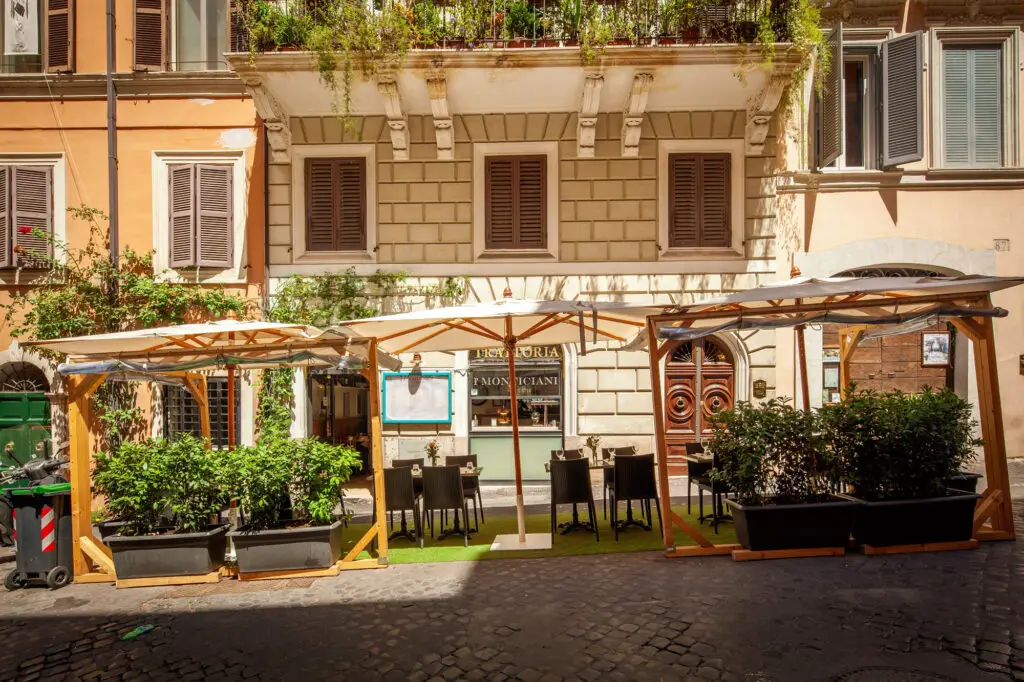
The restaurant was called I Monticiani, and it was actually an Italian and Argentinian restaurant. It wasn’t really fusion, but just two kinds of cuisine being offered. At the time, we were the only ones inside and outside, and only two of the tables were taken, which had me a bit worried. To be fair, it was still early for dinner—only 7:00 PM, which is like 4 PM in the US.
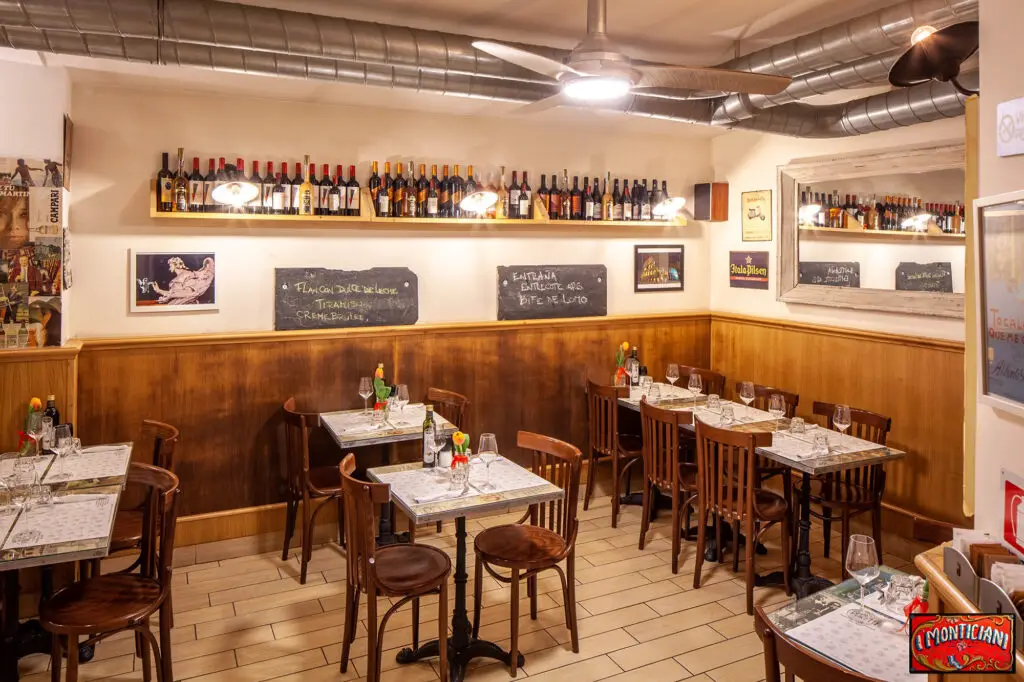
The waiters were really friendly and spoke good English so we could have conversations with them. The menu was a mix of Italian and Argentinian specialties and had quite a bit to choose from. We started with the grilled sausage with chimichurri sauce and some delicious empanadas. Then, I went with an Italian dish for dinner since it was our last night in Italy, getting gnocchi. We also tried some delicious Argentinian wines. Overall, it was a surprisingly good meal and a great way to close out our Mediterranean trip.
Getting from Rome to the Airport
We didn’t plan anything for our last morning in Rome. We ended up getting some pastries at a local bakery for breakfast, which were delicious. Then we headed to the airport. Rome doesn’t use Uber like Athens does; instead, the Free Now app is their preferred method. We downloaded the app and reserved a cab. Within 5 minutes, one was at our hotel. It was a 50 euro fixed fee to get to the airport.
We left at 9 AM, and the ride took us 45 minutes. Most of the traffic was to get out of Rome, then the rest of the way was highway speeds.
Rome’s Airport, Leonardo da Vinci Rome Fiumicino Airport, was large but thankfully easy to navigate around. Most signs were also in English, and many of the workers spoke English. One thing I’d recommend is that once you get in the terminals if you want food, get it in the larger area when you first enter. For our flight, we had to take a tram to get to our gate, and there was only one food option and coffee shop there.
Our flight left on time, and we started making our 9-hour journey back to the East Coast. With that, we officially ended our two-week Mediterranean adventure. It was a fantastic time, a sampler of different cities and cultures around Southern Europe. It was tiring, not a typical relaxing cruise vacation, but it was an amazing trip.
Follow along on our Mediterranean Adventure
Norwegian Viva – Cruise Blog - Pre-cruise – Athens
Norwegian Viva – Cruise Blog - Day 1 – Athens
Norwegian Viva – Cruise Blog - Day 2 – Santorini
Norwegian Viva – Cruise Blog - Day 3 – Kusadasi
Norwegian Viva – Cruise Blog - Day 4 – Istanbul
Norwegian Viva – Cruise Blog - Day 5 – Mykonos
Norwegian Viva – Cruise Blog - Day 6 – Sea Day
Norwegian Viva – Cruise Blog - Day 7 – Messina
Norwegian Viva – Cruise Blog - Day 8 – Naples
Norwegian Viva – Cruise Blog - Day 9 – Florence
Norwegian Viva – Cruise Blog - Day 10 – Nice
Norwegian Viva – Cruise Blog - Day 11 – Rome
5 Hits and Misses on Norwegian Viva
Want to stay up-to-date on these and future cruise blogs?
Follow us on Facebook, Instagram, Threads, or subscribe to our monthly newsletter.
CruiseSpotlight is an Amazon Associate. We may earn a commission when you click links to retailers and purchase goods.
